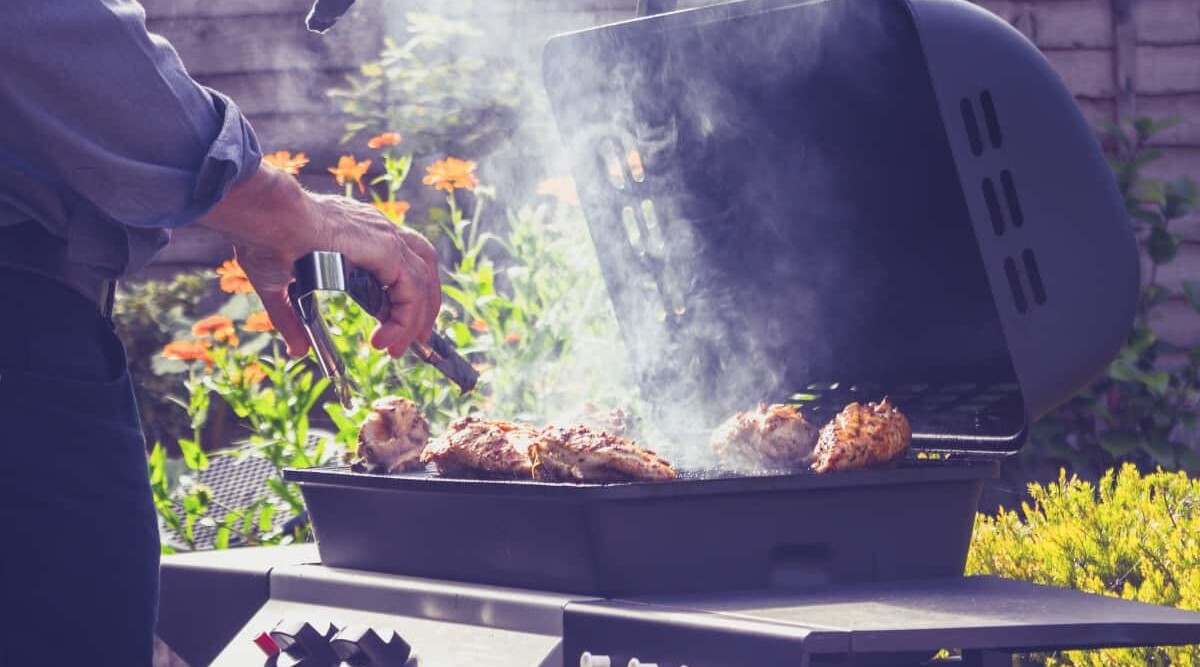
Anger. Denial. Fear. Resignation. There are many ways we respond to hearing something we love may not be good for us. And whether cooking with smoke and fire is bad for our health is certainly a topic that gets people fired up.
But, regardless of our differing perspectives, one thing we need to agree on is to look at all the facts. The real facts. And let’s face it, it’s getting harder and harder to know what the real facts are. There are a hundred answers for everything on the internet, and sifting through it all to get to the truth is no easy task.
In this post, the work is done for you. We’ve looked at the research and science which supports a link between grilling, smoking, and cancer. And we’ve studied the advice and suggestions for how to reduce and minimize the risks.
Here you will find a comprehensive round-up of the connection between BBQ, smoking, grilling, and cancer, with solid research-based information from reputable sources and sites only.
Now to be clear, I’m not here to tell you what to do with this information, and I’m certainly not here to tell you what you should or should not eat.
But I strongly encourage you to read this post carefully and arm yourself with the facts so that you understand the risks and warnings associated with barbecue cooking and smoking. And equally importantly, learn simple ways to reduce these risks.
Key Takeaways
- Grilling meat at high temperatures can lead to the formation of carcinogenic chemicals, such as heterocyclic amines (HCAs) and polycyclic aromatic hydrocarbons (PAHs).
- Smoking meat can also lead to the formation of PAHs, which are formed when fat and juices drip onto the fire and create smoke.
- Consuming meat with HCAs and PAHs can increase the risk of developing various types of cancer.
- While the link between grilling/smoking meat and cancer is not fully established, there is evidence to suggest a connection.
- There are several ways to reduce the risks associated with grilling and smoking meat, such as cutting cooking time and temperature, marinating meat, choosing lean cuts, and pairing grilled meat with vegetables.
- The presence of HCAs and PAHs in cooked meats does not guarantee the development of cancer, as individual factors and genetic makeup also play a role.
- The leading cancer authorities have varying opinions on the link between grilling/smoking meat and cancer, with some suggesting a clear relationship and others stating that more research is needed.
- It is important to stay informed, practice moderation, and make informed choices about grilling and smoking meat to reduce risks and enjoy healthier meals.
Jump to:
- 1 Key Takeaways
- 2 What Happens When Meat is Grilled?
- 3 What Happens When Meat is Smoked?
- 4 What Cooking Conditions Lead to the Formation of These Potentially Harmful Chemicals?
- 5 What Happens to Us When We Consume Meats With These Carcinogens?
- 6 But Don’t Despair! There is Hope for Us Who Love To Grill!
- 7 Let’s Understand the Term “Carcinogen”
- 8 How Can I Reduce My Risk and Make My Grilled Meat Safer to Eat?
- 9 13 Simple Tips to Make Your Grilling Experience Healthier.
- 10 What the Leading Cancer Authorities Say…
- 11 The Importance of the Big Picture
What Happens When Meat is Grilled?
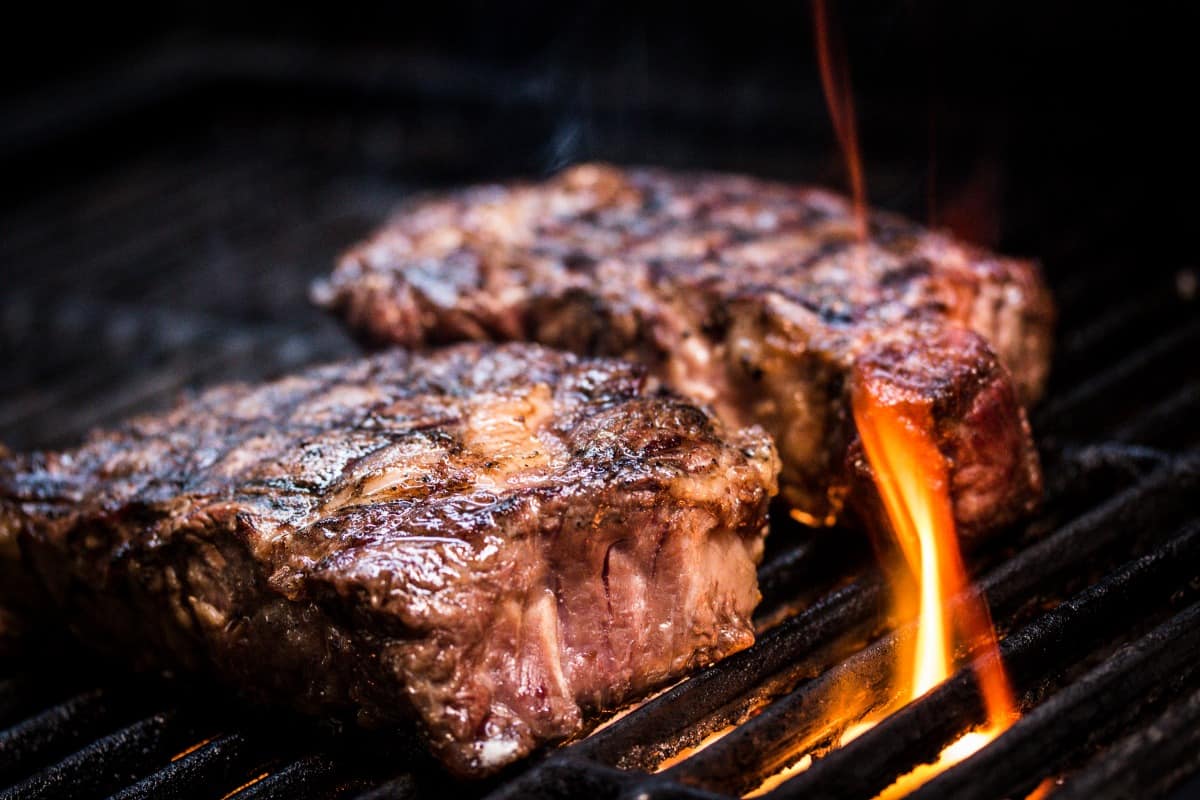
When meat — including poultry and fish — is grilled at high temperatures over 300° F, two chemicals which have been shown to be carcinogenic are formed: heterocyclic amines (HCAs) and polycyclic aromatic hydrocarbons (PAHs).
The rising temperature of meat during cooking causes a reaction between the proteins and sugars in the meat and creatine (a substance in meat muscle tissue). This reaction leads to the formation of HCAs.
PAHs are formed when meat fat and juices drip onto fire and cause flare-ups. The resulting flames and smoke contain PAHs, which then adhere to the meat and are ingested.
The National Cancer Institute says:
“In laboratory experiments, HCAs and PAHs have been found to be mutagenic—that is, they cause changes in DNA that may increase the risk of cancer.”
To be clear, grilling is not alone in the spotlight here. Any and all high-heat cooking methods, including frying and broiling, will lead to the formation of HCAs.
What Happens When Meat is Smoked?
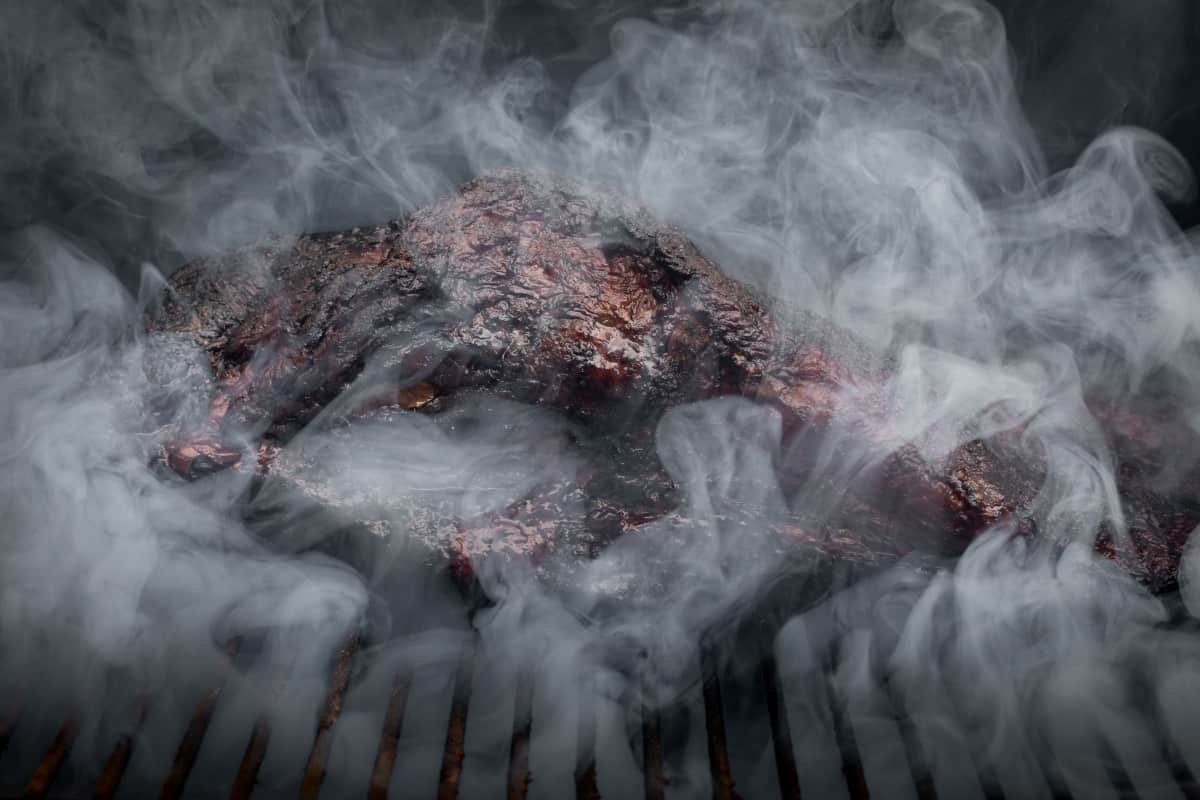
Smoking meat typically involves low, slow cooking over smoldering fuel, whether charcoal or wood. Because heat is kept low, HCAS are not the problem here (temperatures above 300 °F trigger HCA production).
But fat and juices drip from meat as it’s smoking, and this causes PAHs to form within the smoke, which then rises and binds onto food as it cooks. Renowned pitmaster and author, Meathead Goldwyn, describes the science behind the process of smoking like this.
The good news is that if you use a gas grill, you’re in the clear because propane creates very little smoke. For charcoal grillers, it’s important to let the smoke created when starting the fire subside so that that actual cooking process is over white ashy coals with minimal smoke. Click here for Weber’s tips on stoking up a charcoal fire correctly.
And if you’re a purist who smokes with wood, the hallowed blue smoke is what you are looking for. Again, technique is key and, when done correctly, will cause fewer PAHs to form than when done incorrectly (for example, with black smoke…a big no-no). Click here for a comprehensive guide and explanation of smoking with wood. And click here for a guide on getting thin blue smoke on all types of smokers.
The best way to reduce PAHs when smoking is to avoid placing meat directly over the coals or heat source. This is where smoke is most dense and the hotspot for PAHs to form. Indirect grilling and smoking is healthier.
What Cooking Conditions Lead to the Formation of These Potentially Harmful Chemicals?
According to the NCI, the simple answer is that four factors determine whether HCAs and PAHs are formed on cooked meat:
- Type of food: meat, poultry, and fish in order from highest to lowest, can develop carcinogens during cooking
- Cooking temperature: high temperatures (over 300° F) lead to more HCAs and PAHs
- Cooking time: longer cooking leads to more HCAs and PAHs
- Cooking method: methods that involve smoking or charring create more HCAs and PAHs
What Happens to Us When We Consume Meats With These Carcinogens?
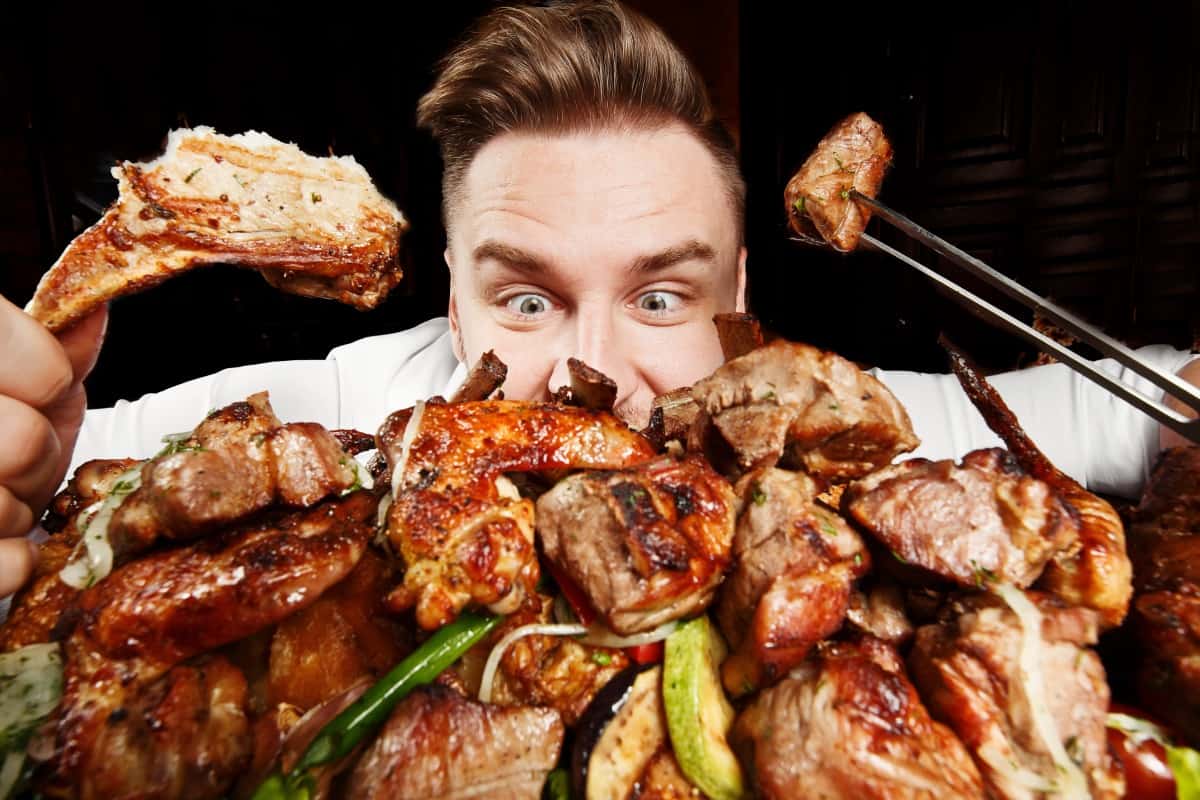
When we eat meat containing the carcinogens HCAs and PAHs, the chemicals get metabolized — or activated — by certain enzymes in our bodies during a process called “bioactivation”. Once metabolized, they are then capable of changing the DNA in our body cells in a way that increases the risk of cancer.
The American Cancer Institute gives this simple definition: “Cancer is caused by changes in a cell’s DNA — its genetic “blueprint.” Numerous experiments have shown that animals exposed to high doses of HCAs and PAHs have developed cancer. (National Cancer Institute)
The NCI further warns that a diet high in HCAs (a high meat diet) has been linked to an increased risk of breast, colon, liver, skin, lung, prostate and other cancers. In addition, eating a lot of meat containing PAHs has been linked to leukemia, as well as GI and lung cancer.
So the bad news is, based on extensive research, the NCI concludes there is a real connection between eating a lot of well-done barbecued meats and an increased risk of a wide variety of cancers.
But Don’t Despair! There is Hope for Us Who Love To Grill!
Just when you’re thinking you’re never going to grill again (oh, just shoot me now!), let’s get the situation and the research into perspective.
Animals in experiments that have proven this link between HCAs, PAHs, and cancer were given massive doses of the stuff…literally thousands of times more than we would ever consume in a lifetime.
Fact is, an undisputed link between HCA/PAH presence in cooked meats and human cancer has actually not been established. And the research has many challenges. For example, different people metabolize differently. And the amounts of HCAs and PAHs cannot easily be quantified, which is why the FDA has provided no guidelines for just how much grilled or smoked meat is safe.
The truth is, they don’t know. Plus, PAHs are also present in air pollution and tobacco, making it difficult to isolate specifically the PAHs that affect us in cooked meat.
So yes, many studies point to a link between meat grilled or smoked over high temperatures and cancer, but researchers have yet to connect all the dots. Science and “proof” can be a slow process, and for now, there are still many unknowns and no clear-cut answers.
Let’s Understand the Term “Carcinogen”
Of course, most people understand it’s a bad thing…something that can lead to cancer, something to avoid if possible.
But, as often happens when you look at something more closely, there are shades of meaning. It is important to understand the variables involved in carcinogens to keep a perspective on the risks of barbecuing and smoking meat.
Here’s how the American Cancer Society explains it:
“Carcinogens do not cause cancer in every case, all the time. Substances labeled as carcinogens may have different levels of cancer-causing potential. Some may cause cancer only after prolonged, high levels of exposure. And for any particular person, the risk of developing cancer depends on many factors, including how they are exposed to a carcinogen, the length and intensity of the exposure, and the person’s genetic makeup.”
How Can I Reduce My Risk and Make My Grilled Meat Safer to Eat?
Pitmaster supremo, Meathead Goldwyn, makes an excellent point:
“Grilling is not bad for your health. But it appears that bad grilling may be bad for your health.”
— Meathead Goldwyn
Grill right with good fire and good technique, and you will minimize the presence of carcinogens in your food. Grill wrong with excessive heat, overdone meat, and black smoke, and well, you may be beating an early path to the Pearly Gates.
Meathead says, most good barbecue uses the 2-zone grilling method where food is cooked over indirect low heat (below the temperature where HCA’s form) followed or preceded by a quick blast of high direct heat to finish cooking and ramp up flavor and appearance. Nothing good comes from prolonged grilling at high heat. Overdone, tough meat? I’ll keep my teeth, thank you.
Let’s take a closer look at some specific steps you can take to reduce the cancer risks of grilling meat. If you learn what to avoid and make some simple changes in the way you cook, you can instantly reduce these risks.
Cut the Time and the Temp!
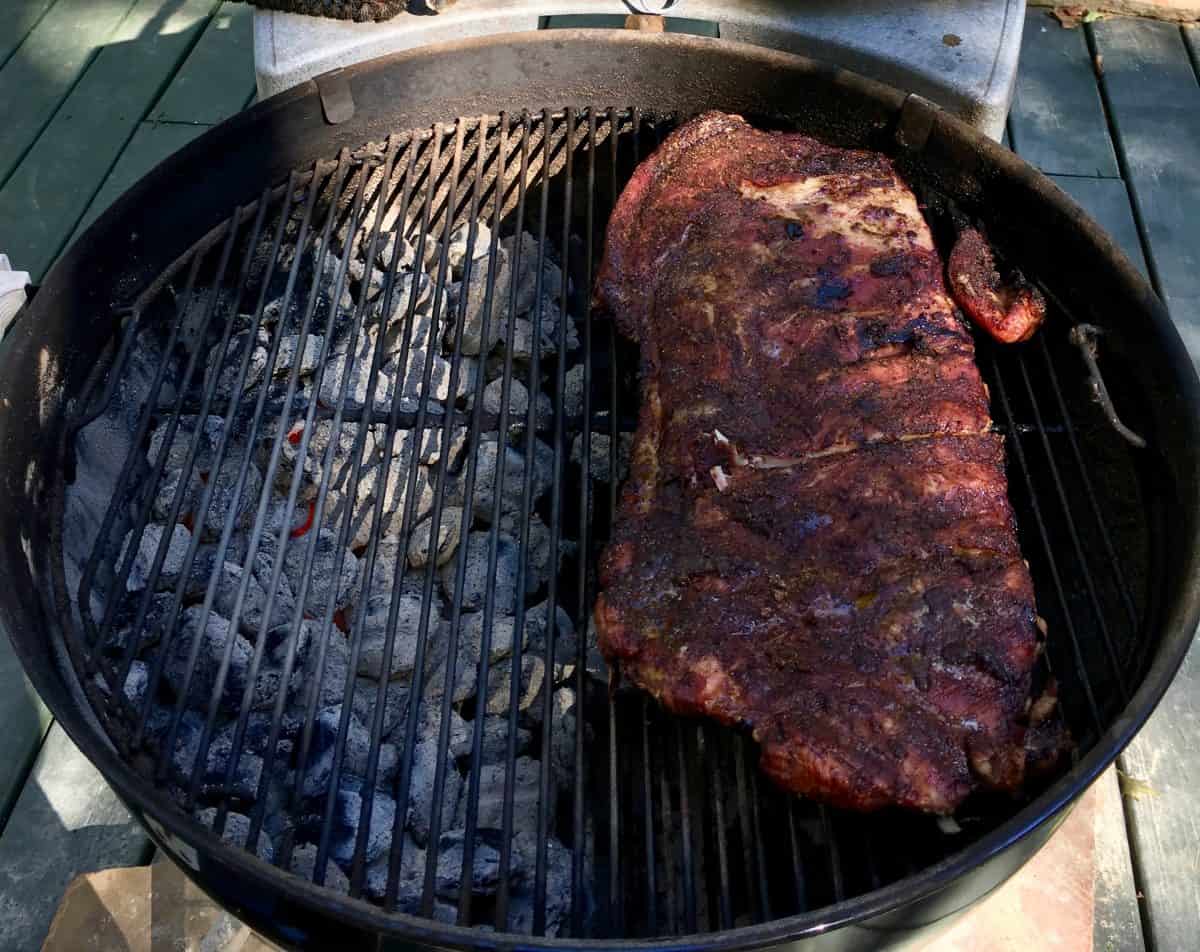
The number one cause of carcinogens forming in grilled meat is intense heat over time. For healthier cooking, and fewer nasty compounds developing on our dinner, avoid putting food directly over open flames and:
- Lower the heat or
- Reduce grilling time
The outcome of either one is meat that is not so well-done, with fewer blackened areas. Bonus? Meat generally tastes better and is more tender when not over-cooked.
Now of course, we’re also told that for meat to be safe, it must be well-cooked. And concern about foodborne illness has actually led to the ban of serving rare or medium-rare meats in some restaurants.
Are we caught in some awful Catch-22 here? You can’t eat it rare, you can’t eat it well-done!
No…because we all have our trusty meat thermometers! As long as you are cooking all meat to the minimum safe temperature recommended by the FDA, you are covered. No need to keep cooking it beyond that point.
For an at-a-glance chart of safe internal temperatures for all meats, check this table from foodsafety.gov.
Marinate Your Meat
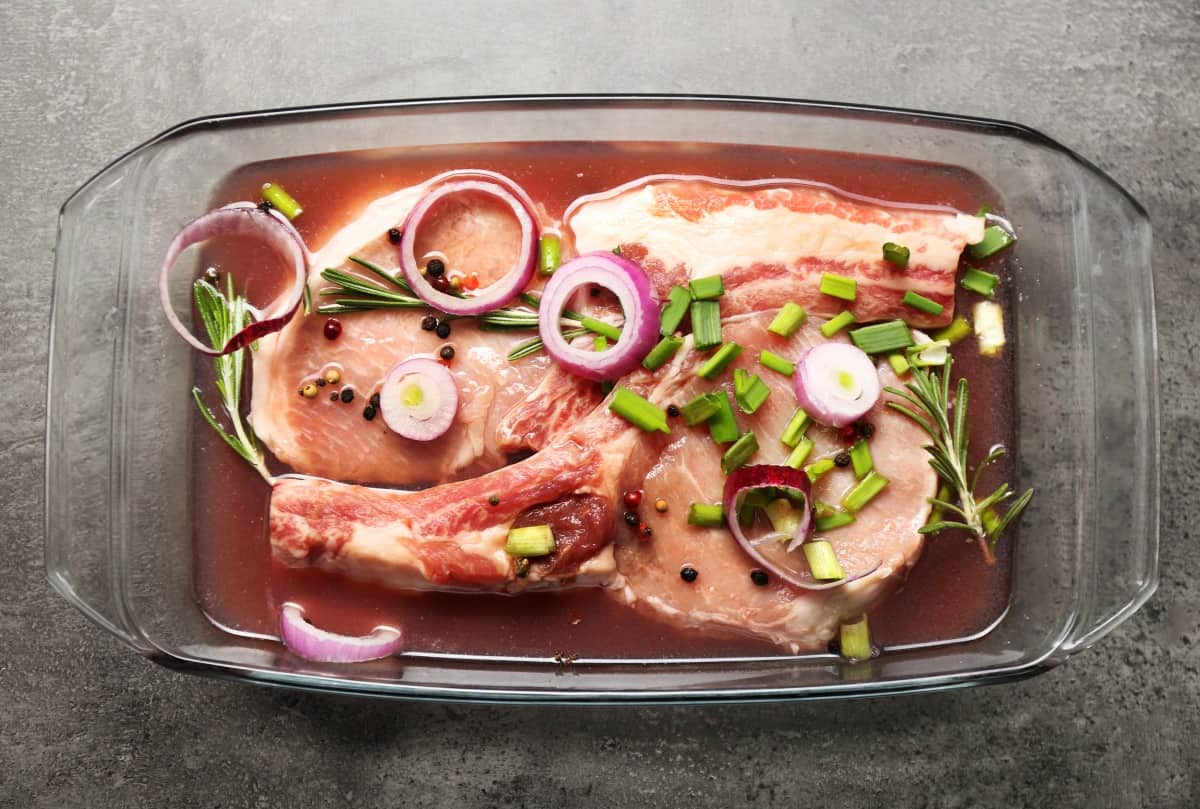
Studies by The American Institute for Cancer Research have shown that marinating meat for at least 30 minutes creates a kind of barrier between the food and the carcinogens that can form during grilling.
It is believed that the antioxidants in marinades containing wine, beer, herbs, and citrus, among other ingredients, block the formation of HCAs.
What you use as a marinade makes a difference, say researchers from Kansas State University and The Journal of Food Science:
- Caribbean marinades (spices, citrus, fruit juice) can reduce HCAs by 88%
- Herb marinades — especially those with anti-cancer power-herb, rosemary — can reduce HCAs by 72%
- Southwestern marinades (vinegar, BBQ sauce) can reduce harmful compounds by 57%
Marinating for 30 minutes to 2 hours is best. Less than that, and the antioxidants won’t have time to do their work. More than that and the antioxidants will start to break down and become ineffective.
Here are some more ingredients that, used in a marinade, will inhibit the formation of carcinogens on your food:
| Cherries | Garlic | Onion |
| Rosemary | Thyme | Virgin olive oil |
| Mustard | Cloves | Apples |
| Cider vinegar | Cinnamon | Oregano |
| Black pepper | Paprika | Ginger |
For more on how marinades can help reduce the formation of carcinogens, click here.
Cut Out the White and Black!
That’s to say, trim away visible white fat, which, when it drips into the pit, will cause flare-ups that contain carcinogens.
And if you can’t resist blackening that meat, just shave off charred bits before eating. Those are the parts that harbor potentially harmful chemicals.
Choose the Right Cuts
Smaller, leaner cuts will grill up faster, spending less time exposed to fire and smoke.
And cut down on processed foods like hot dogs and sausages that contain additional additives, which, in 2015, the World Health Organization determined are carcinogenic.
Microwave it!
I know, I know. Treason, right?! But perhaps it’s a small sacrifice to keep yourself and your family healthy?
Microwaving meat prior to grilling cuts down on time spent on the grill — time during which carcinogens form -— and is highly recommended by The American Institute for Cancer Research.
And Nutrition Action Healthletter further says that microwaving has been shown to reduce HCAs by 90%!
Just take a couple of minutes to precook (stovetop works too, of course) and then finish the piece off on the grill briefly to ensure that fabulous grilled flavor and color (just not black!), which we love.
Eating Veggies Cancel Outs the Negative Effects of Grilling Meat!
You love meat, we understand that. But pair your grilled meat with grilled veggies, and the cancer-fighting phytochemicals found in plants will combat some damaging effects of grilled meat.
One thing I think we can all agree on is everything, including vegetables, tastes better on the grill! Choose cruciferous nutrient-rich vegetables like Brussels sprouts, broccoli, bok choy, and cabbage. Plus, all veggies — even grilled — are free of HCAs, and of course, packed with vitamins and antioxidants. Click here for a list of the best vegetables to cook on the grill.
Here’s a quick video summing up the many simple ways you can reduce carcinogens even as you grill.
13 Simple Tips to Make Your Grilling Experience Healthier.
The Natural Medicine Journal says that “even small modifications in cooking methodology affect HCA production.”
For example, flipping burgers frequently “significantly changes HCA production” as does a difference of 100° in grill temperature, such as lowering the grill from 400 °F to 300 °F.
| What Causes Carcinogens (HCAs & PAHs) | How to Reduce Carcinogens |
|---|---|
| Charring meat | Cut off burnt, blackened charred parts. |
| Large cuts with a long time to cook | Choose smaller, thinner cuts (think kebabs!) |
| Grilling for a long time | Shorter cooking time gives HCAs and PAHs less time to form. Microwaving meat before grilling has shown a whopping 90% reduction in the formation of HCAs. |
| High temperature cooking (over 300 °F) | Cook at lower temperatures, not over direct flame. Experiment with slower indirect heat methods of cooking such as poaching, stewing, braising, or steaming. |
| Fatty meat | Choose leaner cuts and trim away visible fat. |
| Well-done meat | Studies show that regularly eating well-done meat cooked any way is linked with a 60% higher chance of developing pancreatic cancer. |
| Not marinating | Marinating meat with herbs, spices, citrus, alcohol, and other antioxidants has shown a dramatic reduction in the presence of HCAs |
| Processed meat | In 2015, the World Health Organization declared all processed meats to be carcinogenic. Choose natural organically-produced meats instead. |
| Charcoal with self-lighter additives | Use natural petroleum-free charcoal and no lighter fluid. Charcoal with additives create more PAHs when burned. |
| High meat diet | Grill more fish! More HCAs form on beef, poultry, and pork because of their higher amino acid content and longer grill time. And don’t forget veggies which are fantastic on the grill with a little marinade, and completely free of HCAs. |
| Dirty grill grates | Get rid of the potentially carcinogenic residue by scrubbing grates well between uses. |
| Lots of smoke and flame | Cook with indirect heat when possible, avoiding cooking over a direct flame. Try covering grates with perforated foil. The holes will allow fat to drain off but reduce the amount of PAH-infused smoke hitting the food. Also, don’t pierce meats allowing fat to drip and create PAH-dense smoke. If flare-ups happen, move meat away from the direct flame until it subsides. |
| Leaving meat alone | Flip often! Another cardinal grilling rule broken. But in this case, flipping often prevents the meat from overheating and blackening. |
You’ve seen that there is clear evidence of a connection between grilling at high temperatures and cancerous compounds. There is also plenty to suggest that the evidence is inconclusive and unquantified at present. Here are some quick takes from the top authorities on the subject:
- “There’s not enough evidence to say, ‘Don’t ever grill,’” says Colleen Doyle, director of nutrition and physical activity for the American Cancer Society (ACS).
- “There’s a clear relationship between very high temperatures and the risk of cancer-causing agents.” Dr. Rashmi Sinha of the National Cancer Institute.
- The International Agency for Research on Cancer (IARC) (the cancer agency of the World Health Organization) has officially classified red meat as a probable carcinogen, and processed meat as a carcinogen.
- “The general statement that red meat and processed meats are the cause for an increased cancer risk require an appeal and more detailed analyses,” wrote Harald zur Hausen of the German Cancer Research Center, and a Nobel Prize winner in Medicine in 2008.
- “This study strengthens the link between red meat and bowel cancer by showing that chemicals in red meat can damage DNA,” said Ed Yong, science information officer at Cancer Research UK.
- “Population studies have not established a definitive link between HCA and PAH exposure from cooked meats and cancer in humans.” Says the National Cancer Institute, but also: “Researchers found that high consumption of well-done, fried, or barbecued meats was associated with increased risks of colorectal, pancreatic, and prostate cancer.”
- More than 34,000 cancer deaths are caused around the world each year by diets high in processed meat, according to data referenced in the IARC report. By comparison, tobacco causes about a million cancer deaths annually. Alcohol consumption causes 600,000. And air pollution is responsible for 200,000. IARC report in the Lancet.
The Importance of the Big Picture
While the jury is clearly still out on the precise risks involved with grilling, smoking, and cancer, one thing is crystal clear: life is a dangerous business.
Whether you’re driving kids to school, sunning on the beach, enjoying drinks with friends, or grilling in the backyard, danger and health risks are at every turn.
Can you think about it 24/7? I don’t think so. What you can do is stay well-informed, practice moderation, and make peace with the fact that yes, some things we enjoy may not be the best for our health.
But the good news is when it comes to grilling and smoking meat, there are many easy steps you can take to reduce the risks and increase the healthfulness of your meals.
So no need to toss out the grill just yet. With the tips and advice in this post, you’ll be able to grill smarter and still enjoy great barbecue. Who said you couldn’t have your cake and eat it too?
What’s your take on this important topic? Do you feel reassured by the tips and advice covered in this post? We’d love to hear your opinion. If you found this post useful, please share on social media. Let’s get this conversation started!


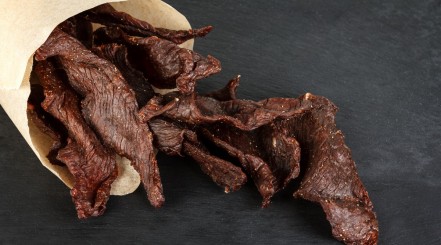
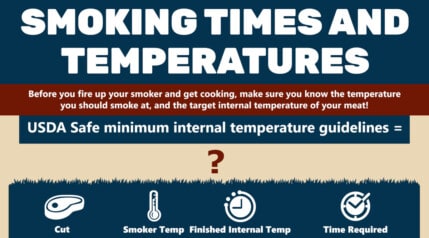
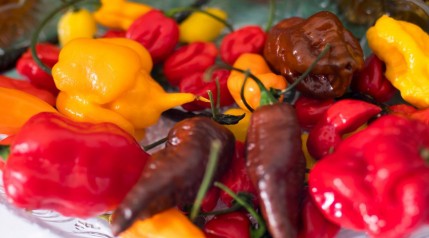

Thanks
Mark, best summary of the issues surrounding carcinogens and cooking I’ve found. I’m a physician, and will put many of these ideas into practice.
Thanks!